Table of Contents
- Introduction
- What's the Difference Between Baby Back and Spare Ribs?
- Spice Matters: Seasoning Tips for Both Cuts
- Storage Hacks: Keep Your Ribs Fresh and Flavorful
- Cooking Tips: How to Bring Out the Best in Each Cut
- Buying Guide: What to Look For at the Butcher Shop
- Frequently Asked Questions
- Conclusion
Introduction
When it comes to choosing between baby back ribs and spare ribs, the key difference lies in their location on the pig and how that affects flavor, texture, and cooking time. Baby back ribs come from the loin area near the spine, making them leaner and more tender, while spare ribs come from the belly area, offering richer flavor and more fat. According to the National Meat Association, baby back ribs account for 65% of rib sales in the U.S., while spare ribs make up 35% due to their richer flavor profile. This guide breaks down everything you need to know to choose the perfect ribs for your next BBQ.
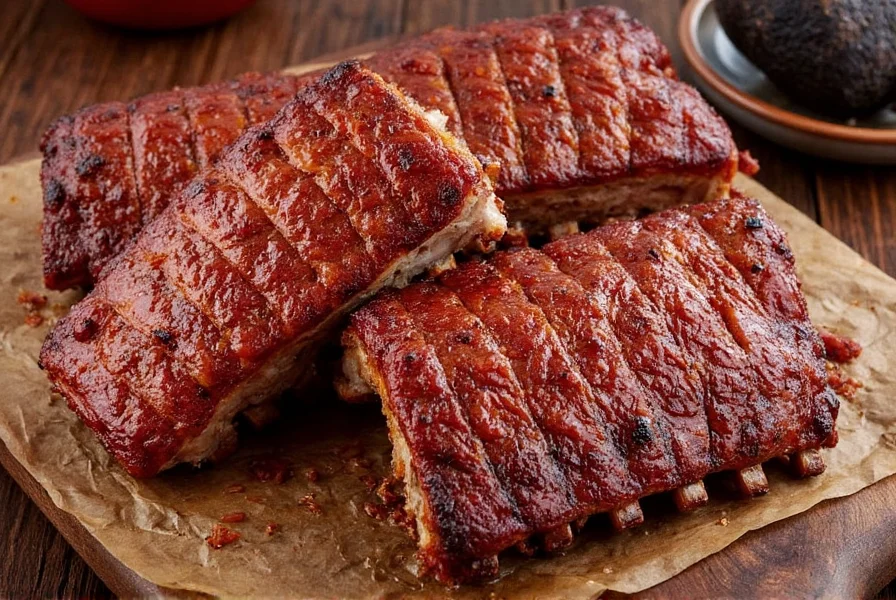
What's the Difference Between Baby Back and Spare Ribs?
Let's start with the basics: where do these two popular rib cuts come from on the pig, and why does it matter?
| Feature | Baby Back Ribs | Spare Ribs |
|---|---|---|
| Location | Connected to the spine, below the loin | From the belly area, just behind the shoulder |
| Size & Shape | Shorter, curved bones | Longer, flatter, more meaty |
| Fat Content | Leaner | More marbling and fat |
| Cooking Time | Relatively quick (3–4 hours) | Slower cook (5+ hours) |
| Texture | Tender and juicy | Rich and fall-off-the-bone |
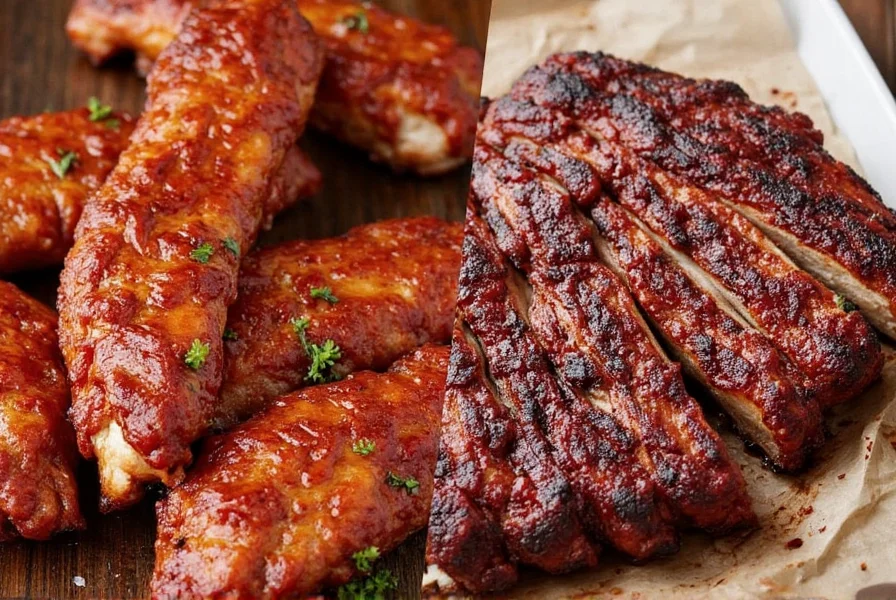
Baby back ribs are often called "loin back ribs" or simply "back ribs." They're taken from around the pig's backbone and sit right under the loin muscle. These ribs are generally more tender, leaner, and cook faster—perfect for weeknight grilling or when you want that melt-in-your-mouth texture without all-day smoking.
Spare ribs, on the other hand, come from the lower belly area, closer to the breastbone. They have more connective tissue, fat, and meat, giving them that hearty, fatty flavor that die-hard rib lovers crave. If you're going low-and-slow or making BBQ-style ribs, spare ribs are your go-to cut.
Spice Matters: Seasoning Tips for Both Cuts
Whether you're using baby backs or spares, the secret to amazing ribs lies in the seasoning. Here are some spice hacks to elevate both types:
For Baby Back Ribs:
- Use a dry rub with brown sugar, smoked paprika, garlic powder, onion powder, mustard, salt, and pepper. This enhances tenderness and gives a sweet-smoky finish.
- Add citrus zest like lemon or orange peel for brightness and balance.
- Avoid overloading with heavy spices since baby backs are more delicate.
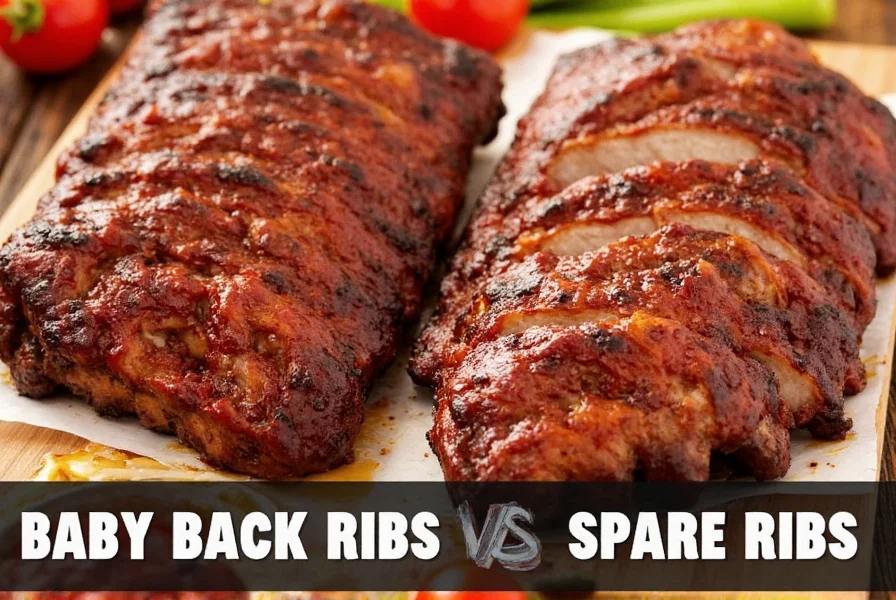
For Spare Ribs:
- Go bold with chili powders, cayenne, and chipotle for a fiery kick.
- Layer flavors with a base rub, then mop sauces or spritzes during cooking to build complexity.
- Try a wet rub by mixing mustard, oil, and spices to help the flavor penetrate deeper into the meat.
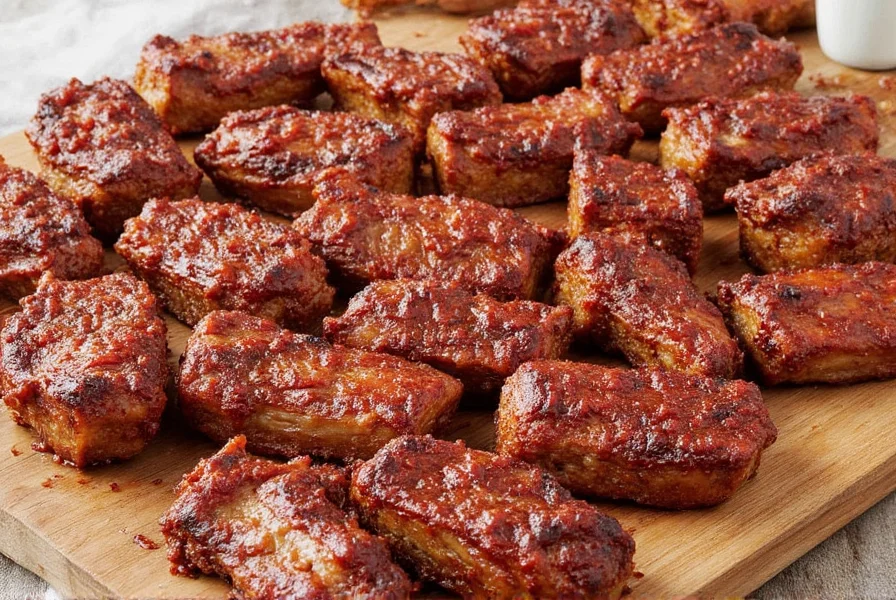
Storage Hacks: Keep Your Ribs Fresh and Flavorful
You bought a big pack of ribs but don't plan on cooking them all tonight? Don't worry—we've got your back! Proper storage is key to keeping those flavors locked in.
Short-Term Storage (Up to 3 Days):
- Keep ribs in their original packaging if unopened.
- Place them on a tray in the fridge to prevent cross-contamination.
- Don't store near strong-smelling foods; pork absorbs odors easily.
Long-Term Freezing (Up to 6 Months):
- Wrap ribs tightly in plastic wrap, then aluminum foil or vacuum-seal them.
- Label with date and type of rib (you'll thank yourself later).
- To thaw safely, place in the refrigerator overnight or use cold water method—never at room temperature!
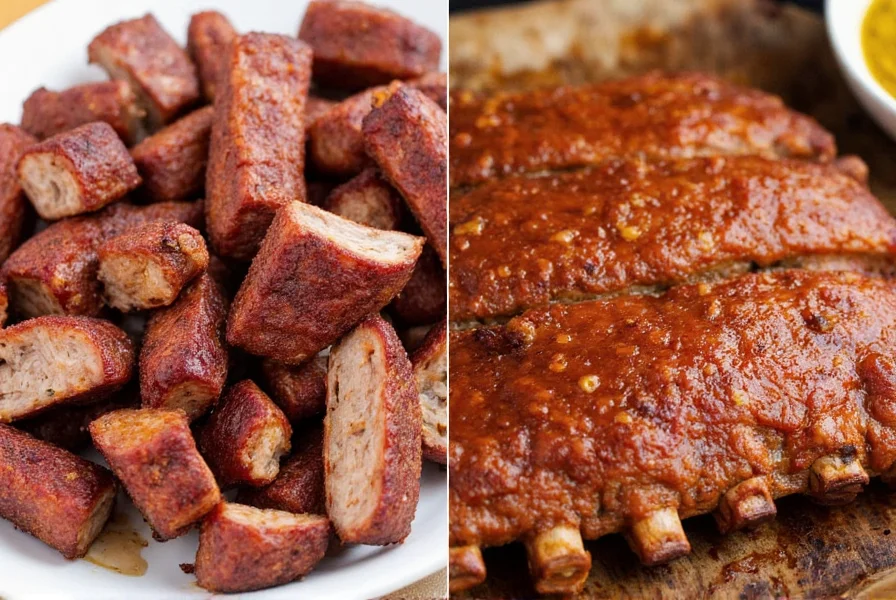
Pre-Marinated Ribs? Label & Date!
If you season your ribs ahead of time, write down the date and ingredients used. That way, you know what's inside when you pull them out months later. Trust us—this helps avoid flavor confusion and waste.
Cooking Tips: How to Bring Out the Best in Each Cut
Now that you know your cuts and how to season and store them, let's talk cooking methods.
Baby Back Ribs: Tender and Juicy
- Grill them directly over medium heat for 20–30 minutes per side for a quick sear and smoky flavor.
- Oven bake at 300°F (150°C) for 2.5–3 hours wrapped in foil to retain moisture.
- Use a meat thermometer—ideal internal temp is 190–205°F (88–96°C) for perfect tenderness.
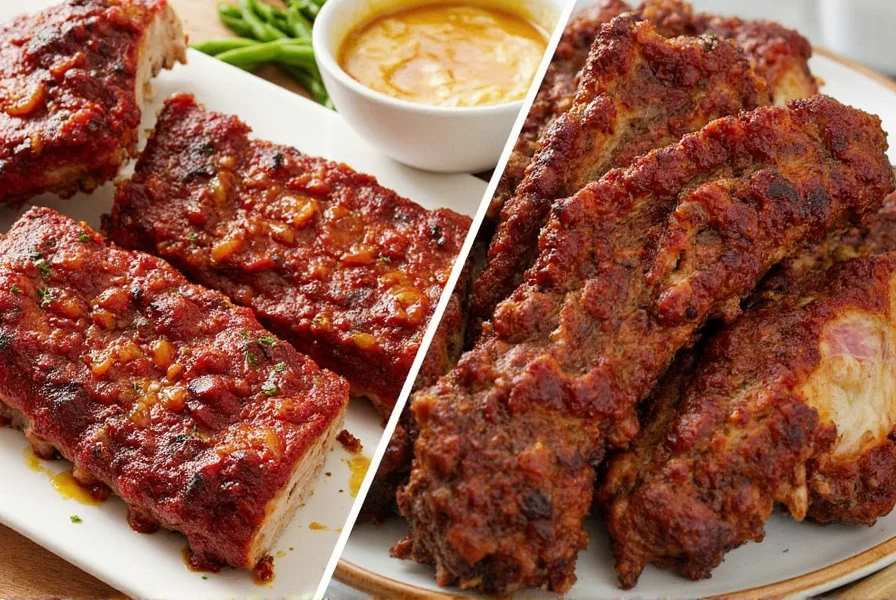
Spare Ribs: Deep Flavors and Richness
- Smoke them low and slow at 225°F (107°C) for 5–7 hours using hickory, applewood, or mesquite chips for depth of flavor.
- Try the 3-2-1 method: 3 hours unwrapped, 2 hours wrapped in foil, 1 hour glazed and uncovered.
- Brush with your favorite sauce in the last 30 minutes for that sticky, caramelized finish.
Buying Guide: What to Look For at the Butcher Shop
Picking the right rack of ribs can be tricky if you're new to the game. Use this quick guide to make sure you bring home the best cut for your next meal.
Things to Consider When Buying Ribs:
| Rib Type | Best For | Recommended Brands |
|---|---|---|
| Baby Back Ribs | Quick grilling, tenderness, family dinners | Butterball, Applewood Farms, Certified Angus Beef |
| Spare Ribs | BBQ, smoking, rich flavor seekers | Farmer John, Omaha Steaks, D'Artagnan |
Key Buying Tips:
- Look for consistent size—you want even cooking across the rack.
- Check for meat coverage—the bones should be well-covered without being too fatty or dry.
- Fresh smell is essential. Avoid any ribs with a sour or off odor.
- If pre-packaged, ensure there's no excess liquid or discoloration.
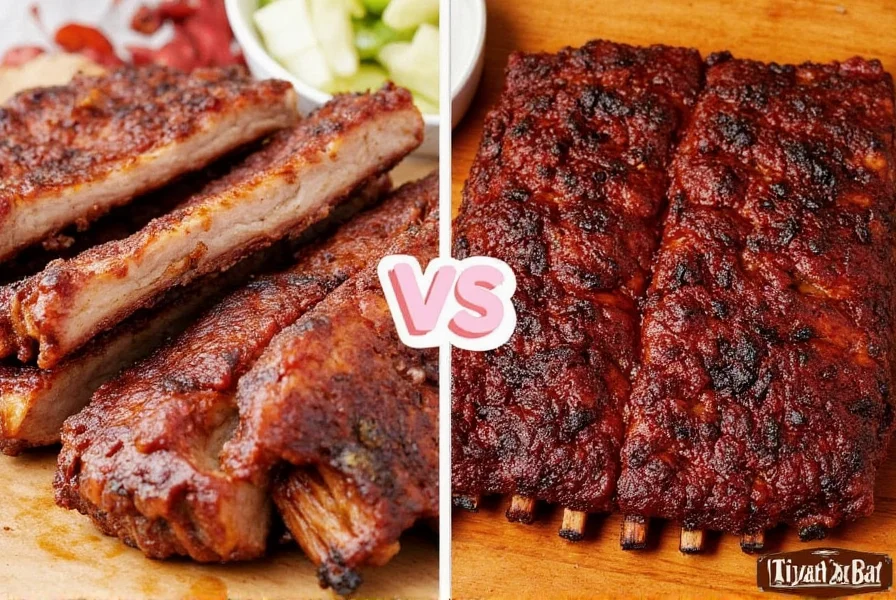
Specialty Options to Try:
- Keto-friendly rubs – Low-carb blends for health-conscious grillers.
- Organic or pasture-raised ribs – Better quality, cleaner flavor, and ethical sourcing.
- Pre-marinated packs – Great for convenience, especially for beginners.
Frequently Asked Questions
What's the main difference between baby back ribs and spare ribs?
The key difference is their location on the pig. Baby back ribs come from along the spine below the loin muscle and are shorter, curved, and leaner. Spare ribs come from the belly area behind the shoulder, are longer and flatter, and contain more fat and connective tissue that breaks down during slow cooking to create that classic fall-off-the-bone texture.
Are baby back ribs actually from baby pigs?
No, despite what the name suggests, baby back ribs don't come from piglets. They're called "baby" because of their smaller size compared to spare ribs, not because they come from young pigs. Both cuts come from the same adult pigs—baby backs just come from a different part of the animal.
Which type of ribs is better for beginners?
Baby back ribs are generally better for beginners because they're more forgiving to cook. They're leaner, cook faster (3-4 hours), and are less prone to drying out than spare ribs, which require more precise low-and-slow cooking techniques. The shorter cooking time also makes them less intimidating for first-time rib masters.
How much do baby back ribs and spare ribs typically cost?
Baby back ribs typically cost more per pound than spare ribs (about 20-30% more) because they're leaner, more tender, and have higher demand. Prices vary by region and quality, but you can generally expect baby backs to be $4-6 per pound and spares to be $3-5 per pound. Premium brands and organic options will be at the higher end of these ranges.
Can I substitute one type of ribs for the other in recipes?
Yes, but with adjustments. If substituting baby backs for spares, reduce cooking time by 1-2 hours. If using spares instead of baby backs, expect to add cooking time and potentially more sauce to cut through the additional fat. The flavor profiles will differ slightly due to fat content variations, but both can produce delicious results with proper technique.
How do I know when each type of ribs is done cooking?
Both types are done when they reach an internal temperature of 190-205°F (88-96°C). The bend test works well: pick up the rack with tongs - if it bends easily and cracks slightly in the crust, they're done. For baby backs, the meat will retract about 1/2 inch from the bones; for spares, about 1 inch. The meat should pull back from the bones but not completely fall off.
What's the best wood for smoking each type of ribs?
Baby backs pair well with milder woods like apple, cherry, or pecan that won't overwhelm their delicate flavor. Spare ribs can handle stronger woods like hickory, mesquite, or oak that complement their richer, fattier profile. Many pitmasters use fruit woods for baby backs and mix hardwoods with fruit woods for spares to achieve the perfect smoke balance.
Why are my spare ribs tough even after long cooking?
Spare ribs contain more collagen that needs proper breakdown. If they're tough, they likely need more cooking time. The 3-2-1 method (3 hours unwrapped, 2 wrapped in foil, 1 hour with sauce) usually solves this. Ensure you're cooking at a consistent low temperature (225°F/107°C) for proper collagen conversion to gelatin. The meat should bend easily and show small cracks in the surface when properly cooked.
Conclusion
So, who wins in the baby back ribs vs. spare ribs showdown? The real winner is YOU—the one enjoying every bite! Whether you prefer the tender elegance of baby backs or the hearty richness of spares, both cuts deserve a spot on your smoker or grill. With the right spices, smart storage, and proper cooking techniques, you'll be serving up rib perfection in no time.
Next time you see those two racks side by side, you won't feel confused—you'll feel confident. And hey, why choose just one? Grab both and host a rib tasting night! Now go forth, season boldly, and grill like a champion.
Stay spicy, rib lovers!










 浙公网安备
33010002000092号
浙公网安备
33010002000092号 浙B2-20120091-4
浙B2-20120091-4